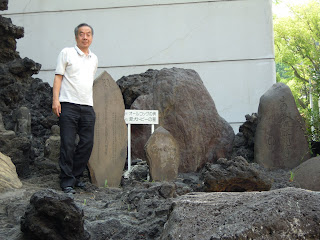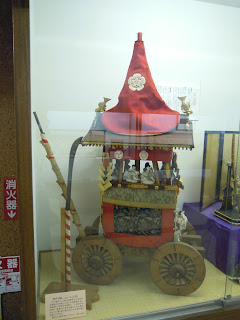Who do you imagine when you heard the family name Koizumi? The former Prime Minister Jun-ichiro Koizumi?
His born name was Patrick Lafcadio Hearn; later he named himself Yakumo Koizumi when he was naturalized in Japan in February, 1896.
Born in Greece(1850):
His father was Irish and mother was Greek. He was born in an small island of Greece 'Lefkada' when his father worked as a doctor of the British Army there. Lefkada was the origin of his middle name Lafcadio. His life was not an easy one.
Brought up in Ireland(1852-1869):
When he was two years old, he moved to Dublin with his mother; that was his father's hometown. His mother didn'd get used to the life in Dublin while his father met his first love who had been already a widow. When Lafcadio was 7 years old, his parents divorced. Since then he was brought up by his grand-aunt. He lost his sight of his left eye in his playgound accident when he was 16; he honed his ESP to overcome the handicap that favored him when he wrote his travel note in his career as a journalist in the US and Japan. The next year his grand-aunt went bankrupt that forced him stop studying at a collage.
Worked as a journalist in the USA(1869-1890):
When he was 19, he moved to the United States of America. When Hearn was in a desparate situation because of poverty, Henry Watkin who was an owner of a printing company in Cincinati gave a chance to Hearn to work for his company; Hearn respected Watkin as if he had been his real father all through his life.
Hearn had been gradually recognized as an eligible journalist and lived in America until he came to Japan on April 4, 1890 at the age of 40.
Life in Japan(1890-1904):
Yokohama(April-August, 1890):
He came to Japan with a commission as a newspaper correspondent which was quickly broken off. It was in Japan that he found his home and greatest inspiration.
While he was travelling around Yokohama and visiting temples and shrines by Rickshaw, he met an intellectual Buddhist priest 'Akira Manabe' who could speak English. With his guide, Rafcadio Hearn visited Kamakura and Enoshima in April and Iseyamakotai-jingu Shrine and Rinko-ji Temple in Yokohama in May.
Matsue(1890-1891):
In August he was offerred a post as a school teacher at the Shimane Prefectural Common Middle School and another school in Matsue City of Shimane Prefecture; Hearn went to Mtsue accompanied by Akira Manabe. In January 1891, Hearn suffered from bronchitis and then a woman named Setsu Koizumi was hired to take care of him.
Kumamoto(1891-94):
In October that year he decided to work as a teacher of 'the Fifth Higher Middle School' in Kumamoto Prefecture. In April of 1893, Hearn began to think of becoming Japanese when he know Setsu's pregnancy.
Kobe(1894-95):
Worked for Kobe Chronicle
Tokyo(1895-1904):
In 1896 he was invited as a teacher of English litereture at Tokyo Imperial University.After he quit the job in 1903, Soseki Natsume succeeded him. Hearn passed away on September 26, 1894.
Shinjuku Ward and Lefkada Towm made a Friendship City Agreement in 1989. In 1993 ShinjukuWard constructed Yakumo Koizumi Memorial Park in the vicinty of his last residence. In the park we can enjoy watching Hearn's bust and Greek style columns which were presented by Lefkada Town.
These three pictures were taken at Yakumo Koizumi Memorial Park in Shinjuku Ward.
P.S.
Soseki Natsume(1868-1916) was a great writer of Japan in the Meiji Era(1868-1922). Soseki taught at the same school 'the Fifth Higher Middle School' in Kumamoto from 1896 to 1900, too. His birth place was within 60 minutes' walk from Hearn's last residence. Is it a coincidence?
Natsume Slope
Natsume Street
The mom\nument say ' Soseki Natsume's birth place'.

























































